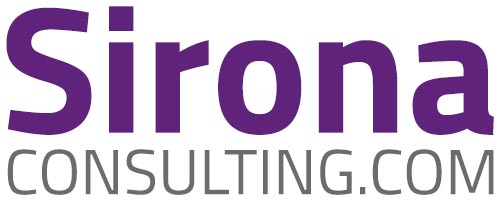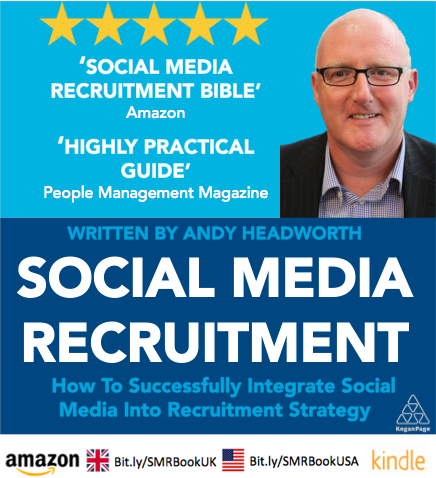Recruiters: Why Are You Not Using Facebook Graph Search?
Hands-up if you subscribe to the theory, ‘Facebook is rubbish for recruiting’. Well you won’t be the only one, the majority of recruiters I come across seem to adopt this approach to the world’s largest social network. For many (especially Europeans), it is ‘private’ and restricted to their friends and family, and they leave the ‘work stuff’ to LinkedIn.
I certainly get that, I really do. But recruiters everywhere, THINK AGAIN! I bet you haven’t even tried Graph Search yet? Don’t dismiss Facebook for recruiting until you have at least tried the potential and power of Facebook Graph Search for identifying and sourcing new candidates.
Just think about what is on Facebook for a minute……..
- 1.25 billion people globally
- Over half the UK population are on Facebook - 30+ million
- Personal details (although sometimes limited) including education, employers, interests, languages, locations, subjects studied
- Dates (i.e. education dates, graduation dates)
- Locations (where you live, where you lived)
- Friends of people (everyone has friends on Facebook)
- Pages that people ‘like’ (everyone likes some pages)
- Think about all the content people are adding every day - that’s searchable as well!
I hope you have got the message by now - Facebook contains HUGE AMOUNTS OF DATA relevant to recruiters, sourcers and researchers. AND it is data that you simply cannot find in other places on the social web.
Everyone is fixated by LinkedIn as the only social network tool a recruiter needs (including LinkedIn for that matter) but that is complete tosh! What about all the people who don’t even have a LinkedIn account, job seekers who only use it once every two years when they are job hunting, or the ‘in-demand’ talent who strip out all the keywords etc from their profiles? Where are you going to find them? With so many people on Facebook, especially university alumni the world over, it makes sense to add Facebook Graph Search to your armoury doesn’t it?
How To Use Facebook Graph Search?
The first thing is to make sure you have got access to it on your own Facebook profile. If you see this then you log-in to Facebook you have got it:
If not, go to your Settings, Language and change to English (US). It will then appear shortly on your profile.
The next stage is to understand how Graph Search works. It is different from every other type of search - Facebook call it Facebook natural language search, and it does take a little bit of getting used to (and some trial and error testing). Basically you start typing what you want, and Facebook will help….
You will see that Facebook starts to help you with your search.
Then you start adding criteria into your search to find the people you are looking for:
And if you want to make some changes to your search you can use the filtering on the same page:
Do you get the idea now?
What about people who work for a competitor or target company and ‘Like’ your Facebook page? (That would be interesting, wouldn’t it?)
What about people who work for xxx company (call centre) and speak xxx language?
Why not try people who graduated in xxx from University XX and live in xxx?
As always with social media data - remember your job title and keyword synonyms - it is user generated content after all!
As I have already said, the power of Facebook Graph Search is in your creativity and lateral thinking.
What do you do when you find people you want to make contact with?
Did you know you have two message inboxes on Facebook?
You have a primary inbox where you receive all your messages from your friends on Facebook. These are the ones you always see. The second inbox is referred to as ‘Other’ in messages - this is where you get all the Facebook message spam, and you have probably never been in it!
When you find someone on Facebook you want to engage with you have two options (on Facebook anyway). Click Message option, and you can send them a message for free. The only snag is that it goes into the ‘Other’ message box.
So it may not be ever be seen. But you can invest £0.66 and send your message to their main inbox to make sure it is seen. It may seem an expensive method, but if you have failed to find their contact details anywhere else (Google+, LinkedIn, Twitter etc) then it may be the only option.
An alternative method for using Graph Search, is simply to use it as the sourcing tool (as shown) and use other channels for the contact and engagement. After all you will have enough information to find them on other networks, if they have other social profiles, that is.
Just bear in mind if you do use the Facebook message approach, be careful how you approach the message you send. People are very protective of ‘their Facebook’ and don’t take too kindly to what they could see as ‘invasion of their personal social space’.
So there you go - Facebook Graph Search. Can you now see why it is so good for identifying new potential candidates?
Over to you - now go and play and then tell me ‘Facebook is rubbish for recruiting’!












